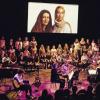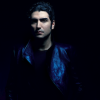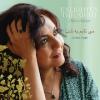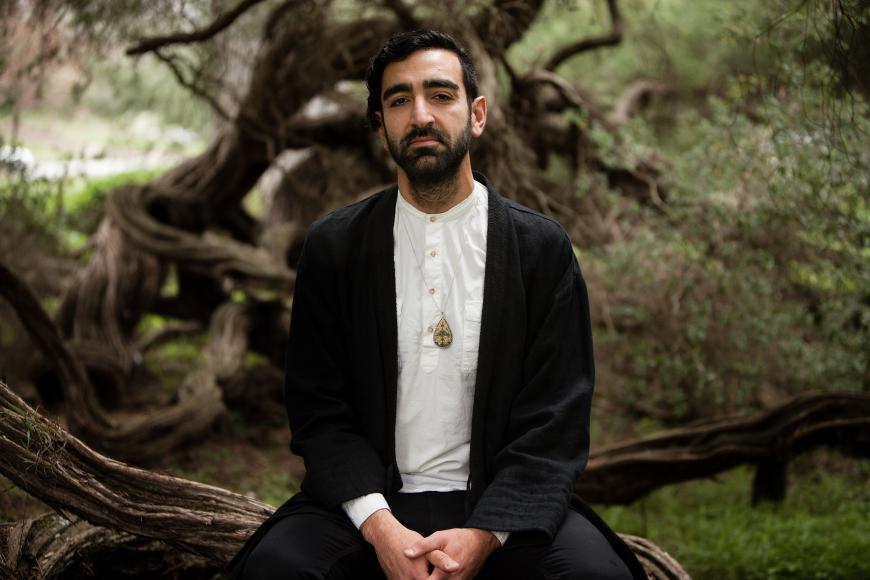
The music of Iranian-American composer Sahba Aminikia is analogous to water. Variably complex or simple, it flows in gentle, naturally syncopated rhythms and structures reminiscent of light rain falling amid sunshine on a rooftop in one work, while another piece’s metronomic regularity is like a steadily dripping faucet. A third piece arrives fully orchestrated with the torrential swoosh of a downpour.
Bearing the imprint of his classical music training and vastly diverse source material — Persian poetry and traditional music, European and Western classical music, jazz, the music of Pink Floyd, Beatles, Queen, and many other contemporary and world music ensembles — overall the San Francisco-based musician’s work serves up a baseline elixir infused with multiple flavors. Lately, his compositional output includes works featuring crowd-sourced human voices obtained through social media. These works transform the sound of young voices reproducing bird calls or the (forbidden) singing of Iranian women or the chanting of the name of a political prisoner into nearly overwhelming tsunamis of pain and wave-like declarations of liberation and beauty.
Aminikia’s music has been widely performed and he has had a long and productive relationship with the Kronos Quartet. During a conversation about composing, the talk turns to the Flying Carpet Children Music Festival of which he is founder/director. In a comment that might surprise his followers, he says, “I can see myself giving up music one day, but I can’t see myself giving up the children I work with. My life energy is inspired by the energy of those children. It keeps me going. It’s such powerful emotion and force that children carry.”
Tell me one thing you believe will always be true about your compositional practices?
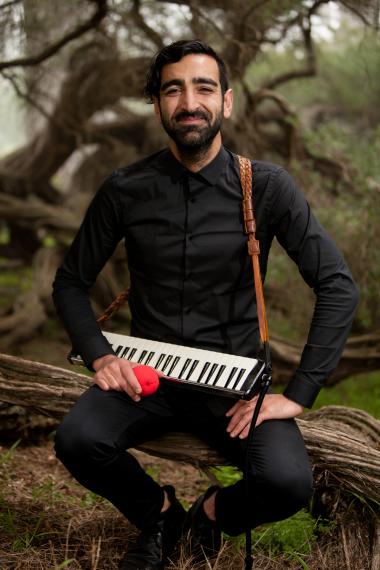
We are in the middle of this international crisis which affects all, but to different degrees. Living in the States makes us privileged to be vaccinated — unlike the majority of the countries in the world. My mission that will not change is that I’m going to follow the story of my own life. I’m aware of what’s happening around us. COVID-19 and this lockdown was a golden opportunity for all of us to realize how our surrounding is more powerful than we think. I’m still making music, continuing to work with my organization in Turkey and with children. [My life story] is very much connected to stories of people around me; friends in the Baháʼí community in Iran, friends in the United States, friends on the border of Turkey and Syria.
And is that truth something you embrace, or do you say to yourself “Sahba, make a work that’s not from your life story.”
I go with the fact that I have to make my own life story more true and more genuine and more colorful. That’s why I go to Turkey and started a festival there. In San Francisco, I’m living the comfortable life. The reality is that I would love to be closer to people who are underprivileged. I hold precious in my mind being closer to people who are living in poverty, to children that are underprivileged.
Do you always have a narrative from which to work or do you sometimes begin with an abstract frame?
Artistry in music comes from limitations not from freedoms we have. In the last couple of decades in the West, many structures have been intentionally demolished to create new voices, sounds and colors. But the reality of music for thousands of years has been its purpose as storytelling. Going back to ancient Greece, poetry and music have been intertwined. For music to have a programmatic, emotional process has been questioned. I am connected to a culture that is extremely conservative and tries to preserve itself through thousands of years of political invasions. Music for me is neither about division nor progress; it’s about stories I’m trying to portray in the language I know.
The story is the part that keeps the music connected to the audience. I try to reach out to the public. A narrative has always been there. When you get out of the musical realm of United States, 99 percent of the music that persists is music that speaks to the heart.
Today there is a large divide between the arts and what we call “lower class” music. The history of conservatories that exist today is that for hundreds of years they taught the skill of music, the craft. But for me the conceptual aspect of music is not limited, it is having a wide understanding of cultures in the world [“high” and “low”]. Now [through the internet and social media] there is so much opinion and expression that finding and curating a satisfying experience is incredibly difficult. Today, we have access to billions of songs, but finding the best music is a difficult task.
You’ve said in interviews that all (soulful) music is written from pain. What are the pitfalls and benefits (for both you and listeners) of music written from pain?
Pain is an ongoing process every human is going through. The reality is you cannot get tired of music connected to a yearning heart. But there are things to avoid. I was completely trained in classical music. In the traditional music of concerts produced in academia, the music is 99 percent not digestible for people in general society. Technical and abstract elements have dominated the emotional side of music. I stand on two pillars: you can always bring a new musical idea into a piece, but you must keep the emotional connection.
Writing from pain actually, I now think there are no pitfalls. Good music will come from people experienced in suffering. Any masterwork I know and connect to carries that inner emotion of human suffering.
Ok, so what does pain sound like in your work?
Let’s talk about Sound, Only Sound Remains, a work in 2016 which was a collaboration with Kronos and women singers from Iran. The piece starts with abstract ambiance with thousands of voices, and it ends up becoming a waltz. It’s very joyful, but it’s connected to something extremely painful; that these women have been banished from singing for 40 years. It comes from pain they are going through. It is long-term pain that has been there for hundreds of years. By just creating a small channel to that reality, my piece is connected to the large suffering of people on the other side of the world. The pain is in not being able to sing for 40 years and the joy is in now you are able to sing for a Western audience. You still try to bring hope, express freedom. This contrast is what I call pain in my work. One aspect is powerfully sad, but sadness is not the concept. The contrasting dense and saturated emotions create an irony the audience can connect to.
You’ve also said your intention is always to compose and perform meaningful work. What for you constitutes meaningful work?
It addresses some reality in the world. In America, an industrialized modern country, the issues we are dealing with are not ones the majority of the world are dealing with: hunger, lack of education, lack of equality. As an American, I feel it’s bringing the suffering and actual pain into context. It creates a calibration when you realize what the world is going through. We realize how privileged we are. This adjustment is necessary because we are geographically remote from the rest of the world and it is difficult for us to empathize. In the Middle East there is an ongoing crisis because of the United States meddling with political aspects of the region. Music with meaning is connected to reality and recalibration and to the world as globe, not just as a country.
Writing from joy: Is that possible?
Absolutely. Comedy is a more difficult way of creating drama. Irony has to be shown. Classical comedy and tragedy, there is a way to write from them. I say there is no joy without pain. You can have a perception of “happy, smiling, satisfied.” But being exposed to a larger spectrum of emotion creates catharsis. I think of the movie Life is Beautiful, by Roberto Benigni [who co-wrote the 1997 film with Vincenzo Ceram]. [It] is a comedy but set in the tragedy of the Holocaust. What happens if you are just in a comedy and it’s all about laughing? It’s tiring and limited.
I recently worked on a piece called House of Circus for the Minnesota Philharmonic Orchestra. It’s a collaboration with an orchestra in the United States and six children in Mardin, Turkey. They are extremely good at acrobatics, juggling, and dancing. Each child has a two-minute performance. There is a huge aspect of circus music, New Orleans jazz, a very joyful aspect, but one aspect is connected to the children, Syrian refugees settled in Turkey, who are in very difficult places. The contrast makes the joy more potent. Watching them perform, the duality defines the range of emotions in a work of art.
There are horrible things in it that happen and are calibrated toward a joyful moment.
The fact I’m emphasizing that music comes from pain and tragedy and moves to joy is given in a contemporary context of today that is very disconnected from normal human emotion. I believe a balance of human emotions and intellectual abstract ideas are necessary.
The pain is more about being connected to human emotion. The reality is that in the Western lifestyle, pain is defined as something to avoid, southing to calm down. But pain can cause joy; joy can cause pain. It’s impossible to separate these two. I’m not saying joyful music should sound like this and sadness should sound like that. Music should provoke some sort of emotion, that is what I believe to be true.
Even in extreme, horrific events there is also an aspect of empowerment — in using circus or music or something to hold on. I try to cultivate that moment when a singer in Iran will create something that will impress the audience with the joyfulness of her empowerment. It’s hitting cold reality and then being born again out of that reality, boredom, depression. I let myself feel that, cry for five minutes, then find revival. You come out of that and are reborn like a phoenix.
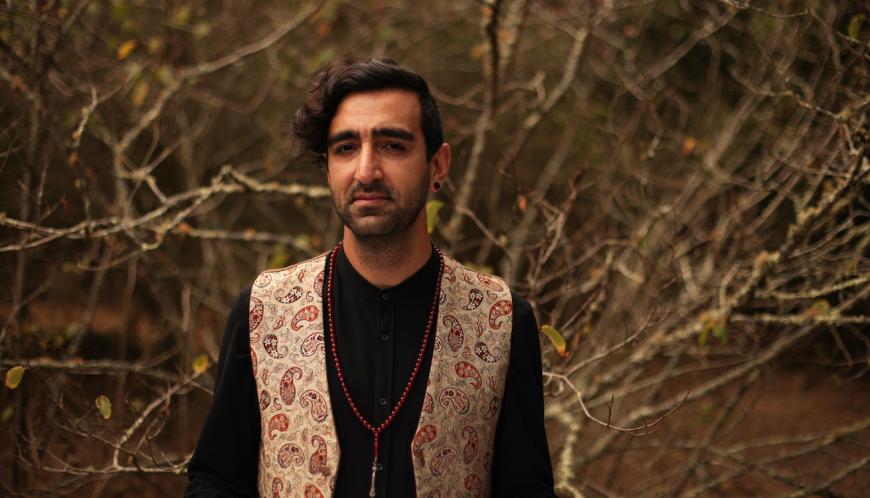
What is one positive and one negative way that the pandemic has influenced your work?
I’m normally isolated as a composer. What the pandemic has meant is I cannot attend my own performances in San Francisco [so] getting feedback has been difficult. Most of the works I composed last year have been published as YouTube videos. [On] social media it is difficult to impact people because you don’t have dominance. In a concert hall, people sit in the dark. They are “condemned” to listen to your music. They have to go through it, experience it from beginning to end. On social media, you cannot force a performance on people. You have to reach out to them and then you hope they just watch two or three minutes of the beginning of a video. It’s difficult to get meaningful feedback. Emotionally, because I love to be in a concert hall and experience how they react to the music, it’s difficult. On the positive side my music online is reaching out to the whole world.
But even so, the human element of a live performance?
The vibration of sound on your skin, sound coming from an actual instrument, that I miss a lot. We are experiencing something together in a concert hall: that’s extremely important we never take for granted.
Your Nasrin’s Dream composition and video: What was your experience while creating it?
Music functions as a healing mechanism. For example, something horrible happens and a prominent civil activist like (Iranian civil rights lawyer) Nasrin Sotoudeh goes on a hunger strike.[1] The majority of society somehow wants to experience this anguish. They function in this piece as being the medium, the voices of these emotions. I create a structure that people can be a part of and contribute to. That’s how I started.
I’ve been hosting this kind of call on social media for many pieces. For this one, she was going through a 40-day hunger strike, the coronavirus situation in Iran was incredibly dangerous. Even with all of that, I don’t think of it as a sad or depressing piece. It is a releasing piece because people are sending me their voices. None of these people can do anything [to help Sotoudeh] but I was hoping that gathering their voices and saying her name again and again would be a source of inspiration.
I tried many ways of composing that were boring, but it ended up working when it was coming out of the voices and the voices becoming multiplied by thousands. In my process, everything starts from the poetry. Even the musical ideas in the piece have to connect to concepts in the poetry.
What is the status of the Flying Carpet Children Music Festival you founded and direct in Mardin, Turkey? [The festival each year serves more than 5,000 children who are Syrian, Iraqi, and Kurdish refugees.]
For 2018 and 2019 I organized the festival. For 2020, we had to cancel it due to the pandemic. Now we are waiting because Turkey is in a critical situation. There is no vaccine for many people for maybe years. The festival depends on the participation of people from outside of that area. I would love to bring people but that depends on the situation becoming normalized. We might do a mini version in October, but we don’t want to risk our participants health by them coming to a country that’s not fully vaccinated yet.
What’s next for you in 2021?
I hope I can continue doing what I’m doing. I don’t think of future prospects. I learned that from one day I spent with [composer] Osvaldo Golijov in Boston. He describes seeing your future as not always looking at your future but looking at your past. I look at the last two years and see where I’ve been. If I’m happy with that, I keep doing what I’m doing.
[1] Sotoudeh was sentenced to 38 years in prison and 148 lashes for defending women's right to choose their own attire. Nasrin’s Dream with music by Aminikia and visuals by Pınar Demiral, was commissioned for the Kronos Quartet by the Hamid and Christina Moghadam Program in Iranian Studies at Stanford University. The work features the hundreds of submissions Aminikia received after putting a call on social media for people to say, sing, scream, whisper or vocalize her name.


